Bryan Pearson's Blog, page 47
May 21, 2013
Giving Back Looks Good on the Outside, Feels Better on the Inside
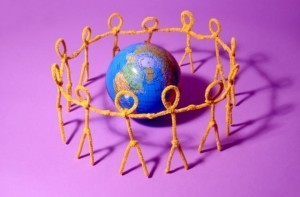 One of the basic rules of loyalty marketing that I have learned over 20 years is that you can’t expect to look beautiful on the outside if you don’t feel great on the inside. And look inside any organization and what do you see? Its people.
One of the basic rules of loyalty marketing that I have learned over 20 years is that you can’t expect to look beautiful on the outside if you don’t feel great on the inside. And look inside any organization and what do you see? Its people.
Employees are the heart of every organization, and their wellbeing will determine, more than any other factor, just how well your lifeblood flows.
There are so many ways to ensure a psychologically healthy workforce. Empowerment, communications and knowledge are among the go-to strategies. And so is sharing, through charitable work. At LoyaltyOne, giving back to our communities has been a defining part of our culture throughout our 20-year history.
Like many organizations, we had a general commitment, but realized that we could not expect material results without a top-down, dedicated strategy. So in 2008, we decided to formalize the effort. We began partnering with charities with the goal of creating positive change, enriching relationships and improving lives in our communities across the globe.
This event, called CommuityOne Day, now takes place in Toronto, the United States, Calgary, Montreal and India. Thousands of associates volunteer in a range of organizations. In 2013, for instance, associates in Toronto had the choice of volunteering with five organizations:
ACER (Association for Canadian Educational Resources): Measures and tracks the effects of climate change with accurate reporting.
Second Harvest: Distributes donated, surplus food to a network of community agencies in the Toronto area, enough for 19,000 meals a day.
Fitness 4 Charity: LoyaltyOne gave $200 per associate to a Christmas Wish program, helping to distribute toys to less fortunate children during the holidays.
Helping Hands: Teams collaboratively build prosthetic hands to be distributed to amputees in developing countries.
Give Back Where You Live: Provides essential items for Toronto’s homeless community.
The results of these efforts were immediate, on the smiles of the people involved, and they were long reaching, for they reached into the homes of families thousands of miles away. And, importantly, CommunityOne Day empowered our associates to serve as role models in their communities. In other words, it strengthens us on the inside.
What could giving back do for your organization? Well, I can say with certainty that it contributed to LoyaltyOne being recognized as one of Canada’s Top 50 Best Employers in 2013 by Aon Hewitt. We also have been recognized as one of Canada’s 55 Greenest Employers in 2013 by Mediacorp Canada.
I once wrote that a company can’t expect to influence consumer behavior if it does not affect employee behavior. Truly engaged employees deliver something that no operational strategy or efficiency measure ever could, and that is heart. Have you had yours check lately?
May 15, 2013
May 15: Loyalty Links & Likes
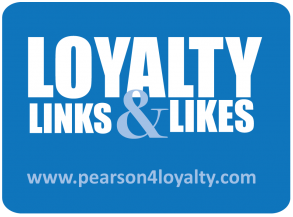 Here are a few loyalty links that caught my eye this week.
Here are a few loyalty links that caught my eye this week.
1. Amazon Earns Customer Loyalty With Integrity, Not Rewards — Forbes
A good will gesture wins one customer’s loyalty and praise.
2. Loyalty Programs Need to Put Customers’ Needs First — AdAge
The author shares examples of five businesses that emphasize experience in building brand connections.
3. Red Carpet Rewards loses its luster for some Nationals fans — The Washington Post
The MLB team has diluted its rewards program angering loyal fans.
4. CBA to spend millions rewarding staff: Can you buy loyalty? — Smart Company
Bank gives staff members $250 after customer service rating increases.
5. Best Frequent Flyer Programs For 2013 — Huffington Post
A survey ranks airlines’ frequent flyer programs based on value and convenience.
May 14, 2013
One Year Later, The Loyalty Leap to Welcome B2B Sibling
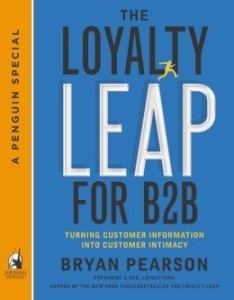 Every morning, billions of people awake from their sleep, put their feet on the floor and ponder a similar thought: What can I do to make today different?
Every morning, billions of people awake from their sleep, put their feet on the floor and ponder a similar thought: What can I do to make today different?
This simple question may have motivated the creation of the airbag, the flushable toilet and cheese-stuffed pretzel bites. It also is what inspired me, one morning in 2011, to think back across the 20 years I had spent at my company, LoyaltyOne, and the lessons and innovations I experienced. It occurred to me that the sum of my days formed a mental manuscript, filled with the events that energize consumers to behave in certain ways, what is required to earn their trust, and just how important it is to nurture that connection, once earned.
So I began to put these events into words. On May 10, 2012, they came out in the form of my first book, The Loyalty Leap: Turning Customer Information into Customer Intimacy.
In the course of the year that followed, I spoke to many executives who applied my customer-committed approach to marketing, and I heard how it has changed the way they think about customer data. But I also found more and more people asking, “How can I apply these lessons in a business-to-business context?”
So one morning I got up and decided to answer this question. The result is what I consider a business partner to The Loyalty Leap – my forthcoming e-book, The Loyalty Leap for B2B: Turning Customer Information to Customer Intimacy.
Due out in July by the Portfolio imprint of Penguin Group in the United States and Canada, The Loyalty Leap for B2B applies my key principles of the Loyalty Leap, along with six critical steps for building a loyalty initiative, across three distinct segments: small businesses, large enterprises and channel marketers. I also share some compelling case studies that illustrate these steps in action by leading names in the industry, including American Express and Teradata.
What exactly is the Loyalty Leap? I define it as using data to build emotional loyalty. Tactically, that means placing the customer above all other organizational missions – product, service, profit – and then basing every decision the company makes on what is meaningful to that customer, using the data shared. Organizations that do this, that are customer-committed, stand apart from those that try to compete on price or innovation because they connect with the customer on an emotional level.
Can the B2B sector make the Loyalty Leap? Well, it certainly wants to. Most corporations already have the tools to identify their best customers and understand their buying habits. It’s just that few know how to use these tools to build a loyalty or customer engagement program that can be used, with equal advantage, by their business clients.
My sincere hope is that these companies can turn to The Loyalty Leap for B2B, and use it to make a difference.
Pre-orders for The Loyalty Leap for B2B are available at:
Amazon.com
Barnes and Noble
iBookstore
Kobo link to come
May 8, 2013
May 8: Loyalty Links & Likes
Here are a few loyalty links that caught my eye this week.
1. How Enterprise Leaders Like Bill Marriott Create Customer Loyalty — Forbes
Loyalty building strategies from Marriott International, UPS and Coldwell Banker.
2. 10 Critical Actions for Enhancing Customer Loyalty: The Case of Travel Companies — MarketingProfs
The author claims that customer loyalty has all but vanished in the travel industry and he offers tips to recovering it.
3. Infographic: Mobile Banking Critical to Customer Loyalty — MobileMarketingWatch
The story shares results of an online study showing mobile banking’s effect on customer loyalty.
4. Small Businesses Outsource Loyalty Cards to App Makers — The Denver Post
Customer loyalty cards are shifting from the wallet to the smartphone and small businesses are embracing the trend.
5. Loblaw Debuts Digital Loyalty App as Grocery Retail War Heats Up — Financial Post
Canada’s largest grocer has launched a loyalty card to boost same-store sales growth.
May 7, 2013
Financial Post: Loblaw debuts digital loyalty app as grocery retail war heats up
by Hollie Shaw
TORONTO • Retailer loyalty programs are aiming to reach people where they do a vast amount of price-comparing these days — on their smartphones.
Loblaw Cos. Ltd., country’s biggest grocer, debuted Monday its new PC Plus loyalty card in Ontario and plans to roll it out nationally by the end of the year to its Real Canadian Superstore, Zehrs, Provigo, Atlantic Superstore divisions.
“This will help boost same-store sales growth one customer at a time, one transaction at a time,” Uwe Stueckmann, senior vice-president of marketing at Loblaw, said of the highly personalized program, which sends individual deals to customers based on their buying habits.
“Our program is designed to make sure we drive more value and more share of wallet out of our best customers.”
Traditional loyalty programs offer the same incentive to every customer, but PC Plus will vary offers based on consumers’ behaviour; those who buy the same items all the time will get a reward for buying what they always have, and will get even more significant rewards if they stretch outside of their shopping comfort zones, Mr. Stueckmann said.
Customers can register by downloading the PC Plus smartphone app, which functions in the same manner as a loyalty card. Existing members of Loblaw’s PC Points plan, a loyalty program for its PC Financial credit and debit cardholders that began in 1998, can now earn more points if they register in PC Plus. Alternatively, customers without smartphones can pick up a free PC Plus card at one of Loblaw’s stores.
In addition to the shopping component, the app includes a meal planning function and a shopping list function based on sale items and purchase history. The digital shopping list can be shared with members of the same family.
Loblaw’s move comes as the grocery sector enters its fiercest state of competition to date with the arrival of Target and a vast expansion by Walmart.
At the same time, other retailers have been enhancing their existing loyalty programs, including Hudson’s Bay Co., Canadian Tire, which is pilot testing a digital version of Canadian Tire ‘money,’ and Shoppers Drug Mart.
Shoppers embraced personalization last month, rolling out a digital deals program nationally to Optimum Card holders on its email list. Weekly emails offer individualized deals and online coupons to customers based on their purchase histories.
“Generic marketing messages just don’t resonate as much as we’d like them to,” said David Harrington, the retailer’s vice-president of business analytics and Optimum. “Customers demand much more of us. We have already got you as an engaged cardholder — it is kind of our obligation to send [targeted messaging] back to you.”
After Shoppers launched a pilot program last fall with 100,000 customers, that group spent more money in the stores, he said.
“We saw a very clear uptick in terms of trips to the store and items in the basket,” he said. Now two million people are receiving tailored email offers. Customers currently have to print off the email coupons and redeem them in stores, but Shoppers is looking at a mobile component to the program, he said.
Loyalty programs are fast becoming more sophisticated as the competitive stakes rise in retailing.
“[PC Plus] and the digital component is showcasing what needs to be the trend and where everybody is going right now,” said Bryan Pearson, president of LoyaltyOne, the operator of Canada’s biggest loyalty program, Air Miles.
Air Miles members receive targeted emails based on their shopping habits — those who regularly pump gas at Shell stations or buy groceries at Metro, for example.
“Being relevant [in communication] is about delivering a customer experience that says ‘we get you.’ As humans we want to connect to things where people seem to understand who we are, and if you are not willing to become more customer-specific in your marketing you risk losing the business to companies who are willing to take that extra step.”
More critically for Loblaw, engaged in a price war with everyone who sells groceries and soft home goods, the new program insulates it from the margin-depleting competitive price matching between rivals who see each others’ flyers.
“No two customers get the same set of offers ever, [so there is] no possibility for our competitors to respond to this,” Mr. Stueckmann said.
PC Plus also gets around the burden that mass deals put upon the supply chain of a large national retailer, he said.
May 6, 2013
At Best Buy, The Best Customer Experiences Come From Employee Buy-In
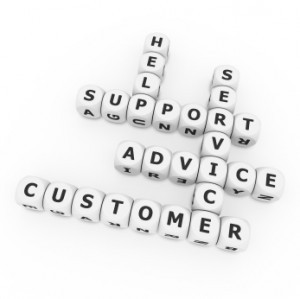 Ask any consumer about his or her best buying experience, and you’ll hear it did not simply involve a product purchase, but an entire brand encounter. This is the case whether we are purchasing televisions or golf shoes.
Ask any consumer about his or her best buying experience, and you’ll hear it did not simply involve a product purchase, but an entire brand encounter. This is the case whether we are purchasing televisions or golf shoes.
So a recent story about Best Buy’s efforts to improve the store experience by informing and educating its staff captured my immediate interest. The effort, headed by Shawn Score, Best Buy’s senior vice president of U.S. retail, is both grass roots and straightforward. Among his efforts: increase sales training of the products being sold; provide incentive pay to workers who improve sales and customer satisfaction scores; and reschedule shifts so the most-experienced workers are on the floor during busy weekends.
What Best Buy is doing is using its product knowledge as a differentiator, but it can do the same with its customer knowledge, as well. Best Buy operates a robust loyalty program that captures the kind of data that connects the dots on customer interactions. With these insights, Best Buy’s frontline employees can see what their customers own and have recently purchased, and use that knowledge to offer products and services that are relevant right then and there.
Let me apply a personal example from another merchant. While purchasing a pair of golf shoes at an Ecco store this past year, I was asked by the associate if I had waterproofing spray to protect my investment. I was unsure, so she asked if I was a repeat customer and, hearing that I was, looked up my information. In a moment she was able to see that I had purchased shoe cleaner and polish, but not the waterproofing spray.
So she sold me a bottle, my shoes are protected in the dewy grass, and I have a positive association with the brand – all because Ecco empowers its front line staff to act on its data.
This same exercise can be applied at Best Buy. Say I am prepared to purchase a smart TV and Blu-ray player. The sales associate, upon calling up my loyalty membership, will see that I have never bought a universal remote and might benefit from an in-wall cable management system. My $1,000 purchase can become a $1,300 purchase.
I believe that most employees, regardless of brand or product, want the opportunity to make the customer experience better. But it is up to the employer to provide them not only with training, but also with the tools to allow them to effectively enhance the customer experience. With the Best Buy RewardZone program, this could include the data that shows historical purchase patterns and preferences.
I am optimistic that Best Buy is on the right track. It not only has this information, it also has an experienced sales executive heading the charge. I look forward to seeing its employees buy in.
May 1, 2013
May 1: Loyalty Links & Likes
 Here are a few loyalty links that caught my eye this week.
Here are a few loyalty links that caught my eye this week.
1. 4 Great Customer Loyalty Cards — MSN Money
The author ranks various rewards programs, pointing out the good and the bad.
2. Rogers to launch customer loyalty program this year — CTV News
The telecommunications company hopes to keep customers from competitors by rewarding those who use its services.
3. When Companies Get It Right — The New York Times
A collection of customer experiences that have resulted in increased loyalty.
4. The 6 Top Retailers for Inspiring Brand Loyalty — The Motley Fool
This story shares results from Brand Keys’ Customer Loyalty Engagement Index and profiles the top retailers.
5. All-Day Breakfast May Be in Our Future: McDonald’s CEO — CNBC
McDonald’s CEO hints that a loyalty program and mobile services may be in the fast food chain’s future.
April 29, 2013
Sexy Yes, But Data Analysts Must Learn Moral Code
 Many of today’s best universities are seeing data analysis as a North Star leading to new curriculum development. But in order to reach their goal successfully, they will need a moral compass.
Many of today’s best universities are seeing data analysis as a North Star leading to new curriculum development. But in order to reach their goal successfully, they will need a moral compass.
This thought struck me while reading the latest report on the emerging industry of data science and its need for professionals – what Harvard Business Review called “the sexiest job of the 21st century.” According to the story, in The New York Times, dozens of programs have been developed at major universities, including Columbia, Stanford, New York University, Northwestern, Syracuse, University of California at Irvine and Indiana University. I’m proud to say that my alma mater, Queen’s University, has launched a Masters in Management Analytics and easily filled the class for the first year of the program.
This big trend is in direct correlation to the emergence of Big Data, and all the headlines that go with it. Last September I had written about the pending demand for data experts in the loyalty-marketing field. Among the figures cited: 97 percent of companies with revenue of more than $100 million are pursuing expertise in business analytics, according to Forrester Research. Yet the data analytics field is forecast to fall short of professionals by 2018, with an estimated 190,000 qualified data scientist positions left vacant at that time.
Colleges are scrambling to attract and educate students fast enough to meet this burgeoning demand. At North Carolina State, all 84 of last year’s graduates were offered jobs, the program’s director told the Times. The average salary exceeded $89,000.
If demand equals sexy, then Harvard Business Review is right. But less emphasized, and more important, is the need to handle the data with a principled conscience. That may not sound sexy, but consider the power data yields; it could turn a person’s life completely upside down if mishandled.
As the story describes it, “Using data to decide someone’s eligibility for a line of credit or health insurance, or even recommending who they friend on Facebook, can affect their lives.”
So how do these universities build the models that balance these considerations while sorting out those who want to solely let the data speak for itself? The Times story answered it in one sentence: “Ethics classes address these questions.”
It’s almost a throwaway line, but it resonated. Not a single person should have access to data without understanding the rationale for having it, the need to care for it, and the implications of mismanaging it. There are tremendous opportunities for both companies and customers that arise from sharing information and improving the way we create relevant interactions. But the industry is simply expanding too fast to cut corners, and our brands, reputations and balance sheets are at risk if we don’t ensure evenness between what is possible and what is right.
This new frontier of professional possibilities may have been brought to us by Big Data. But the inclusion of formalized ethics courses, designed specifically to address the considerations and possible repercussions of data use, is a good step forward. Combine that with an ongoing dialog around best practices, and we should have the ingredients to help us all make the move from Big Data toward good data.
April 24, 2013
April 24: Loyalty Links & Likes
 Here are a few loyalty links that caught my eye this week.
Here are a few loyalty links that caught my eye this week.
1. How to Use Mobile to Increase Customer Loyalty — PYMNTS.com
Five tips to harnessing mobile technology to gain loyal customers.
2. How Costa Coffee Used Data to Drive Loyalty and Sales — Fast Company
The UK chain is winning emotional connections with customers because of its clever use of data.
3. Loyal Shoppers Get Beauty Booty — Adweek
Bare Escentuals is using customers’ purchase history to send tailored gifts.
4. Customer Experience Drives Strong B2B Relationships — 1to1 Media
This story shares customer experience takeaways from a survey of 100 B2B businesses.
5. Hotel Chains Offer the Personal Touch — Calgary Herald
Rewards program personalization creates great guest experiences.
April 22, 2013
Can Merchants Find a Home on New Facebook Screen?
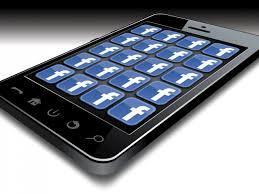 Facebook may call its new mobile software “Home,” but I bet a lot of brands are looking at it and thinking “sales!”
Facebook may call its new mobile software “Home,” but I bet a lot of brands are looking at it and thinking “sales!”
Facebook Home replaces a users’ normal mobile home screen with their Facebook feed, so that the moment they turn on their phones, they are connected with their personal Facebook page. Among the many features of the app, which is available on select Androids, is direct friend messaging. You can tap on the face of a friend and begin a conversation.
Surely merchants are eyeballing this technology and wondering what opportunities exist for them in the Facebook Home application. When I read about it, it brought to mind something my friend, the digital communications guru and author Mitch Joel, recently told me. We were discussing his forthcoming book, “Ctrl Alt Delete,” and the topic turned to how online brands can generate loyalty through social media when there is so much competition and noise in the space.
His response: The average Facebook user has a pretty small universe of connections, so you have to create value – regardless of what you are selling, the channel or your message.
“We think of Facebook as this billion-plus network where everybody is connected, but in reality the average person on Facebook has, I think, 200 connections,” Mitch told me. “How do you penetrate that? There is no one-stock answer for every business, but uniformly I do think you have to create utility. The way you overcome fatigue is through value and utility in an environment that provides features that indirectly connect the consumer to the brand.”
Mitch is a smart guy. Facebook Home certainly presents an opportunity of brands to engage consumers, but the effectiveness of the channel depends on execution. The relative affordability of digital communications through mobile and social channels has led to a tendency to abuse the privilege.
Our rule of thumb: If you’re not creating value, then don’t send the message. Just because a brand knows how to reach its customers, or found a new way to do so, that does not mean it has been invited to cram their mailboxes with irrelevant offers or communications. If we apply the same disciplined thinking to digital channels that we have applied to traditional paper channels, in which there are genuine cost implications to over-communicating, we’d put a lot more thought into the messaging.
That is a principle any brand should take to Home, and to heart.
Bryan Pearson's Blog
- Bryan Pearson's profile
- 4 followers



